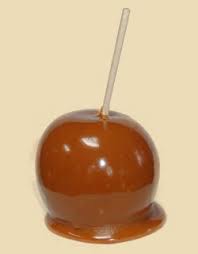On December 1, 2017, PulseNet, the U.S. Centers for Disease Control’s molecular subtyping network for foodborne disease surveillance, identified a cluster of three Listeria monocytogenes clinical isolates with indistinguishable pulsed-field gel electrophoresis (PFGE) pattern combinations. These isolates were closely related to one another by whole-genome multilocus sequence typing within three allele differences (range = 0–3 alleles), indicating that the infections were likely from the same source.
 CDC, the Food and Drug Administration (FDA), and state and local health departments initiated a multistate investigation. An outbreak case of listeriosis was defined as an infection with L. monocytogenes, with an isolate that was indistinguishable by PFGE and closely related by whole-genome multilocus sequence typing to the outbreak strain isolated during October–December 2017.
CDC, the Food and Drug Administration (FDA), and state and local health departments initiated a multistate investigation. An outbreak case of listeriosis was defined as an infection with L. monocytogenes, with an isolate that was indistinguishable by PFGE and closely related by whole-genome multilocus sequence typing to the outbreak strain isolated during October–December 2017.
The cases corresponding to the three isolates were identified in Illinois, Iowa, and Michigan. Isolation dates ranged from October 15, 2017, to October 29, 2017. Patients ranged in age from 55 to 71 years (median = 69 years), and all three patients were male. All patients were hospitalized for listeriosis; no deaths were reported. PulseNet was queried routinely for new isolate matches during the investigation, and no additional cases were identified.
Interviews were conducted with all three patients or their surrogates using the standard Listeria Initiative questionnaire (1), which asks about a variety of foods consumed in the month preceding illness onset. Grocery store receipts were collected for the patient in Michigan. Review of reported exposures indicated that all three patients had consumed prepackaged caramel apples purchased from retail establishments in the month preceding illness onset. A case-case analysis was performed comparing exposure frequencies for all food items included in the Listeria Initiative questionnaire for the three outbreak-associated cases with exposure frequencies for 186 sporadic cases of listeriosis from the same states reported to CDC since 2006. Caramel apple consumption was significantly higher among patients included in the outbreak, compared with that among patients with sporadic illnesses (odds ratio = 21.7; 95% confidence interval = 2.3–infinity). None of the interviewed patients had leftover caramel apples in their home for testing.
State and local officials collected records at two of the three retail locations where caramel apples had been purchased. All three retailers sold the same brand of caramel apples (brand A). The product was packaged in a plastic clamshell containing three caramel apples, each on a stick. Caramel apples were seasonal products that were only available for a short period in the fall at two of the retail locations. However, the retail location where the Illinois patient purchased caramel apples had the product in stock at the time of the investigation. Eight packages of caramel apples were collected for testing by the Illinois Department of Public Health, but L. monocytogenes was not detected in any samples. It was not known whether the tested caramel apples were from the same lots as those consumed by the ill persons in this outbreak.
During an inspection at the caramel apple production facility, FDA reviewed records and practices and collected environmental samples for testing. No significant food safety concerns were observed. None of the environmental swabs yielded L. monocytogenes. Environmental swabs collected at a single whole apple supplier yielded L. monocytogenes, but it was not the outbreak strain. Traceback activities did not implicate a specific lot or supplier of whole apples used in brand A caramel apple production during the period of interest.
No additional outbreak-associated illnesses were identified during the investigation. In light of the limited shelf life of the product (reported by the production facility to be 15 days), it was unlikely that caramel apples consumed by ill persons in this outbreak would have still been available for purchase or in persons’ homes at the time of the investigation. Because there was no evidence to suggest an ongoing risk to the public, no public warning was issued by federal or state agencies.
 Although the outbreak strain of L. monocytogenes was not isolated from caramel apples or their production environment, the epidemiologic evidence indicated that caramel apples were the suspected vehicle in this outbreak. All outbreak-associated ill persons consumed a specific brand of a relatively uncommon food product in the month before their illness onset, and all were infected with indistinguishable L. monocytogenes strains. Caramel apples were previously implicated in a large multistate outbreak of listeriosis during 2014–2015, caused by contamination of whole apples (2). Ready-to-eat food processors, including those that make caramel apples, could consider the introduction and persistence of L. monocytogenes in food production environments as a potential hazard and mitigate that risk through appropriate environmental monitoring and preventive controls (3). Further research into the control of L. monocytogenes in fresh produce, including fresh apples, might help identify prevention strategies to reduce or eliminate the pathogen in some ready-to-eat foods.
Although the outbreak strain of L. monocytogenes was not isolated from caramel apples or their production environment, the epidemiologic evidence indicated that caramel apples were the suspected vehicle in this outbreak. All outbreak-associated ill persons consumed a specific brand of a relatively uncommon food product in the month before their illness onset, and all were infected with indistinguishable L. monocytogenes strains. Caramel apples were previously implicated in a large multistate outbreak of listeriosis during 2014–2015, caused by contamination of whole apples (2). Ready-to-eat food processors, including those that make caramel apples, could consider the introduction and persistence of L. monocytogenes in food production environments as a potential hazard and mitigate that risk through appropriate environmental monitoring and preventive controls (3). Further research into the control of L. monocytogenes in fresh produce, including fresh apples, might help identify prevention strategies to reduce or eliminate the pathogen in some ready-to-eat foods.
Notes from the field: Outbreak of listeriosis likely associated with prepackaged caramel apples
25.jan.19
CDC
Jessica R. Marus, MPH1; Sally Bidol, MPH2; Shana M. Altman3; Oluwakemi Oni, MPH4; Nicole Parker-Strobe, MPH2; Mark Otto, MSPH5; Evelyn Pereira, MPH5; Annemarie Buchholz, PhD5; Jasmine Huffman1,6; Amanda R. Conrad, MPH1; Matthew E. Wise, PhD1
https://www.cdc.gov/mmwr/volumes/68/wr/mm6803a5.htm
1Division of Foodborne, Waterborne, and Environmental Diseases, National Center for Emerging and Zoonotic Infectious Diseases, CDC; 2Michigan Department of Health and Human Services; 3Illinois Department of Public Health; 4Iowa Department of Public Health; 5Food and Drug Administration, Silver Spring, Maryland; 6Oak Ridge Institute for Science and Education, Oak Ridge, Tennessee.
All authors have completed and submitted the ICMJE form for disclosure of potential conflicts of interest. No potential conflicts of interest were disclosed.
